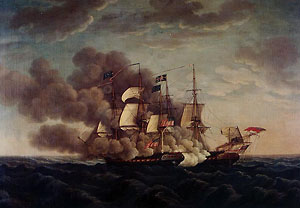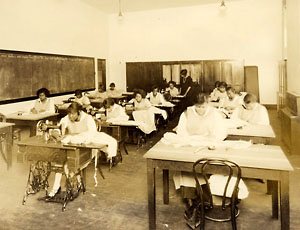New Jersey Manual Training and Industrial School for Colored Youth
307 West Burlington Sreet, Bordentown, NJ | View Map

Bordentown School administration building. Credit: New Jersey State Archives, Department of State
The New Jersey Industrial and Manual Training School for Colored Youth, which was known as The Bordentown School, is one of the most important secondary schools for African Americans in the northern United States. The Bordentown School was sometimes called “the Tuskegee of the North”, a reference to the famous Tuskegee Institute founded in 1881 and headed by Dr. Booker T. Washington. Until desegregation of public schools was ordered by the Supreme Court in the 1950s, the Bordentown School operated as a government-supported boarding school for grades six through twelve. It represented the state’s largest investment in public education for African Americans during the era of segregated or “Jim Crow” public education. The school was also an important social and professional meeting center for African Americans in the first half of the twentieth century.
The school is located on the site of a farm purchased in 1816 by Commodore Charles Stewart, a naval hero who commanded the U.S.S. Constitution in the War of 1812. The Constitution was popularly known as “Old Ironsides” and is one of the US Navy’s most famous vessels. Students here referred to their alma mater as “Mother Ironsides”.

U.S.S. Constitution “Old Ironsides”
Reverend Walter A.S. Rice of the African Methodist Episcopal Church in New Brunswick founded the Bordentown School in 1876 as a privately supported educational entity. Reverend Rice’s mission was to educate African American students of both sexes and train them “in such industries as shall enable them to become self-supporting”. The school relocated to Bordentown City in 1886, where it was incorporated as the New Jersey Manual Training and Industrial School for Colored Youth, just five years after the famous Tuskegee Institute in Alabama was formed.
The state of New Jersey assumed control of the growing school in 1894. In 1896–97 the campus relocated to the Stewart estate. Construction of new school buildings in the Georgian Revival style began in 1902, as enrollment increased and the curriculum expanded. Over the next three decades dormitories, administration and assembly buildings, athletic fields, educational and vocational trades buildings were constructed. The 400-acre campus eventually included over thirty trade, academic, and residential buildings and two working farms. Students helped to run the school as part of their education. They operated the school’s farms and orchards, prepared meals, ran printing presses, repaired and maintained buildings, operated mechanical systems, and carried out major landscaping and site work projects. The curriculum included training in educational subjects and industrial and manual trades.

Bordentown School sewing class. Credit: New Jersey State Archives, Department of State
In June 1955, the Bordentown School closed, after the 1947 New Jersey Constitution made segregation in public education unlawful and the U.S. Supreme Court ruled racial segregation in schools and other public facilities to be unlawful. The state converted the school into the E.R. Johnstone Training Center for the developmentally disabled, which closed in the early 1990s. The campus is now a correctional facility operated by the New Jersey Juvenile Justice Commission. The New Jersey Manual and Industrial School for Colored Youth is listed in the National Register of Historic Places.
Bordentown School Alma Mater
“Proudly stands our Mother Ironsides
Framed against the sky,
Overlooking field and river
From her hill-top high.
Ironsides, Mother, School we love!
Loud we sing to thee.
Pledging thee thru all the ages
Love and loyalty.”
For more information:
- www.nationalregisterofhistoricplaces.com/nj/Burlington/state.html
- www.njwomenshistory.org/Period_5/IndustrialSchool.htm
- www.burlingtoncountyhistoricalsociety.org
- www.njtransit.com
Banner art: Vocational training included woodworking. Credit: New Jersey State Archives, Department of State. Credit: New Jersey State Archives, Department of State






